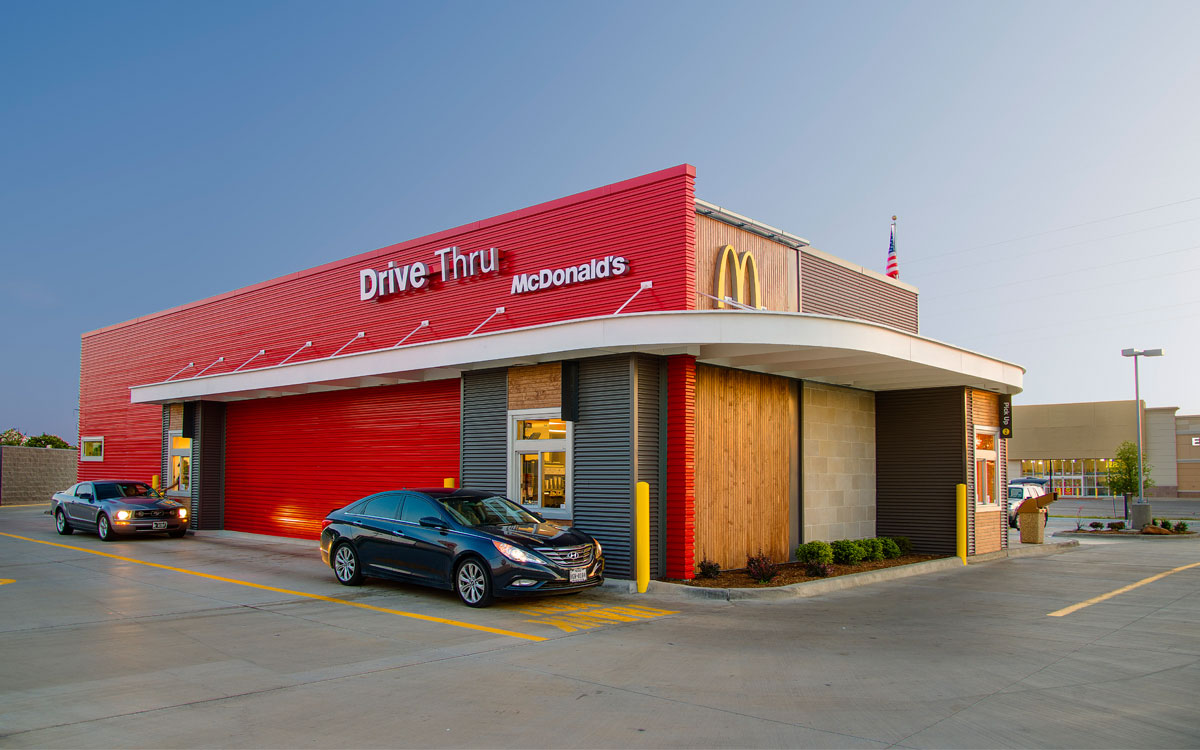Any fear of a sales slowdown from McDonald’s to start fiscal 2018 was swiftly erased Monday morning. The fast-food giant continued its stellar streak of earnings with another Wall Street-pleasing quarter, posting comparable same-store sales gains of 2.9 percent in the U.S. and 5.5 percent globally in Q1. McDonald’s solid showing marked the 11th consecutive quarter of positive comparable sales and fifth straight of positive guest counts. The report sent McDonald’s stock up nearly 5 percent to $165.83 in afternoon trading. FactSet predicted global comps to grow just 3.6 percent.
McDonald’s credited the comps rise to higher menu prices. Chief financial officer Kevin Ozan said during an April 30 conference call that McDonald’s increased premium products, like its Signature Recipe Burgers, lifted check averages. So did customers ordering multiple items at once, something Ozan attributed to McDonald’s tiered $1 $2 $3 Dollar Menu, which arrived in January. Price increases and product mix shifts led to the growth, McDonald’s said.
This was an interesting result considering a January report from Nomura Instinet analyst Mark Kalinowski. He surveyed 26 domestic operators representing 286 locations. Some franchisees said they were concerned the new menu could lower checks and hurt their ability to control menu prices, as well as increase food cost.
In reality, it seemed to work in reverse. Ozan said in the call that McDonald’s customers used the menu to add on to their orders. In other words, the upselling nature of the tiered, varied offerings actually helped raise checks instead of lowering them. There were still guests, Ozan said, who used the menu to create meals from the three price points. CEO Steve Easterbrook added in the call that guests who order from the new value menu are also purchasing more items than those who don’t.
If you couple that with the higher-priced burgers on the other side of the spectrum, McDonald’s customers are spending more per visit than originally anticipated.
Guests are ordering premium items and classics, and then adding new value items, executives explained.
The morning daypart proved challenging, though. Easterbrook said a paltry initial response to the menu promoted McDonald’s to introduce a 2 for $4 mix-and-match deal on breakfast sandwiches. He credited a decrease in U.S. customer visits to increasing breakfast competition.
The value breakfast space continues to saturate. Dunkin’ Donuts, in one example, launched a tiered menu of its own in April that focuses on $2, $3, and $5 price points. Known as Dunkin’ Go2s, the menu allows guests to pick from among three of the brand’s most popular breakfast sandwiches, and purchase two of their “go-to” favorites.
Dunkin’s breakfast sandwich sales have never been better. So it’s not surprising to see the chain expand this side of its offerings. The brand said it enjoyed record-breaking numbers in Q1. Earlier in the year, Dunkin’ said its morning business was representing about 60 percent of systemwide sales, and that the segment reported positive for Dunkin year-over-year and increased sequentially each quarter in 2017. The fourth quarter also saw record-breaking sales for breakfast sandwiches, which have gained sales momentum for six straight quarters.
For McDonald’s, this decline was offset by guests interacting with the brand in ways they haven’t before. Easterbrook said in a statement that “More customers are recognizing that we are becoming a better McDonald’s, appreciating our great tasting food, fast and friendly service and compelling value as we execute our Velocity Growth Plan.”
Diluted earnings per share increased 17 percent to $1.72. The company earned $1.32 billion versus $1.21 billion, or $1.47 per share, in the year-ago period. This beat Zacks Investment Research’s expectations by 12 cents. Total revenue declined 9 percent to $5.14 billion, credited, McDonald’s said, to its ongoing refranchising initiative.
Internationally, McDonald’s posted same-store sales gains of 7.8 percent in the “International Lead” segment. The U.K. and Germany, particularly, had strong quarters.
In the High Growth segment, comps increased 4.7 percent, led by strong gains in China and Italy, partially offset by challenges in South Korea.
Comps rose 8.7 percent in “Foundational” markets.
“We’re keeping the customer at the center of everything we do as we continue enhancing their McDonald’s experience,” Easterbrook said. “Guided by our Velocity Growth Plan, we are satisfying the rising expectations customers have for the taste and quality of our food and greater convenience as they visit our restaurants or enjoy meals delivered to their homes and offices. We are confident in the strategies guiding our business for today and for long-term sustained growth into the future.”






